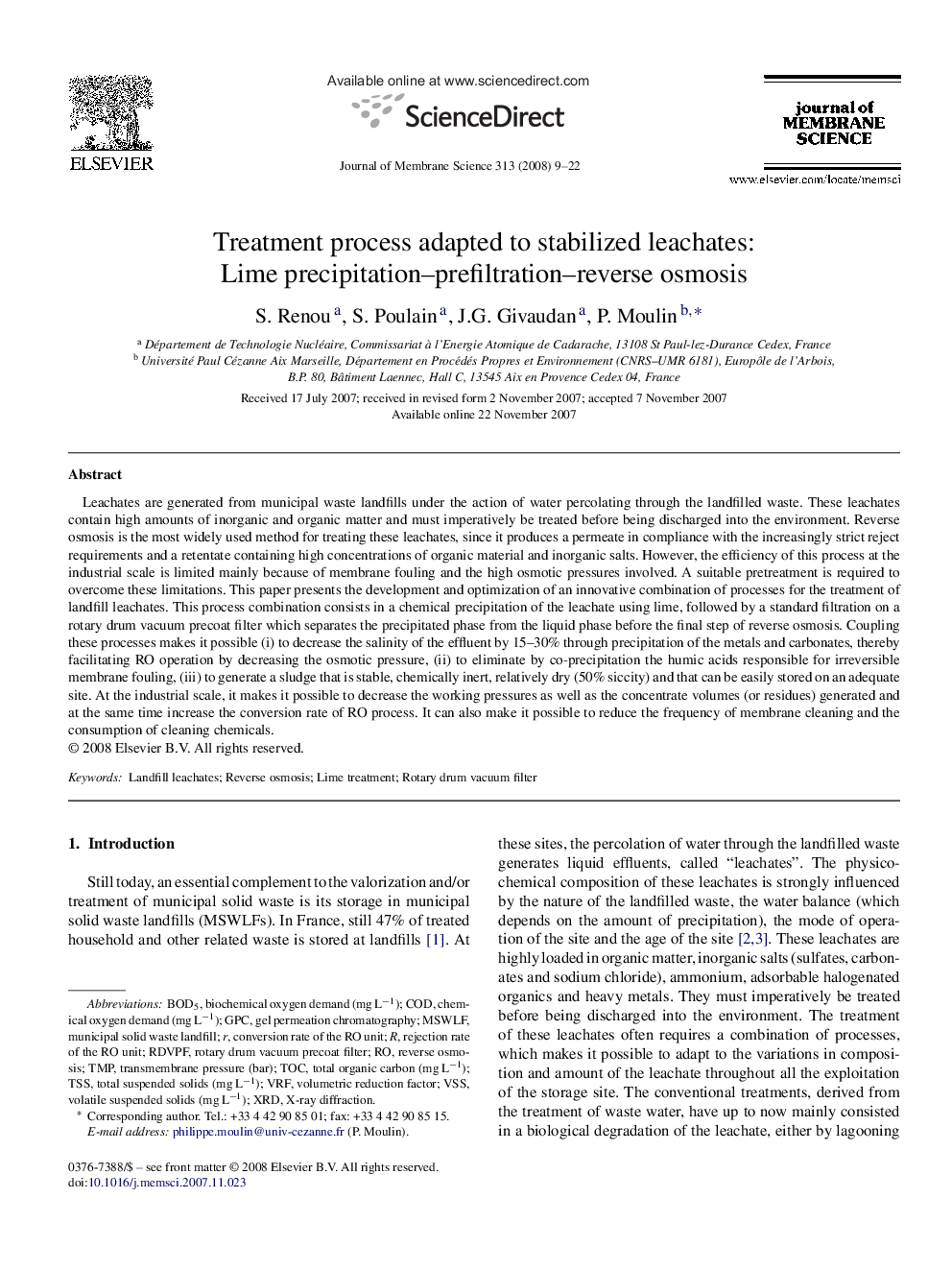| Article ID | Journal | Published Year | Pages | File Type |
|---|---|---|---|---|
| 638004 | Journal of Membrane Science | 2008 | 14 Pages |
Leachates are generated from municipal waste landfills under the action of water percolating through the landfilled waste. These leachates contain high amounts of inorganic and organic matter and must imperatively be treated before being discharged into the environment. Reverse osmosis is the most widely used method for treating these leachates, since it produces a permeate in compliance with the increasingly strict reject requirements and a retentate containing high concentrations of organic material and inorganic salts. However, the efficiency of this process at the industrial scale is limited mainly because of membrane fouling and the high osmotic pressures involved. A suitable pretreatment is required to overcome these limitations. This paper presents the development and optimization of an innovative combination of processes for the treatment of landfill leachates. This process combination consists in a chemical precipitation of the leachate using lime, followed by a standard filtration on a rotary drum vacuum precoat filter which separates the precipitated phase from the liquid phase before the final step of reverse osmosis. Coupling these processes makes it possible (i) to decrease the salinity of the effluent by 15–30% through precipitation of the metals and carbonates, thereby facilitating RO operation by decreasing the osmotic pressure, (ii) to eliminate by co-precipitation the humic acids responsible for irreversible membrane fouling, (iii) to generate a sludge that is stable, chemically inert, relatively dry (50% siccity) and that can be easily stored on an adequate site. At the industrial scale, it makes it possible to decrease the working pressures as well as the concentrate volumes (or residues) generated and at the same time increase the conversion rate of RO process. It can also make it possible to reduce the frequency of membrane cleaning and the consumption of cleaning chemicals.
